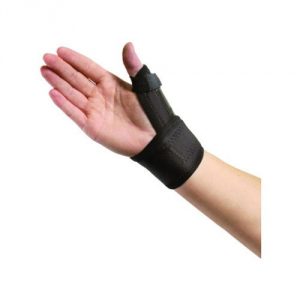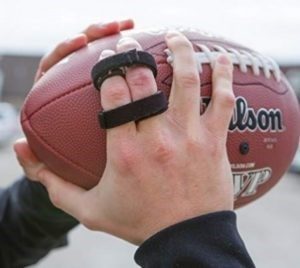
Smartphone Injuries: When Technology Physically Hurts
September 22, 2019
How often do I have to train to get results?
October 7, 2019Most people who have played a sport that includes a ball in their lives, they have probably injured one or more fingers in the process. For example, you are reaching to catch a ball and somehow you mistime it just a little bit and instead of the ball nestling nicely into your palm, it strikes the tip of your finger. Most of the time the pain is instantaneous and the finger gets a bit numb. You reach down, cradle your finger, sometimes even shaking it and then you go back to playing. After the game is over you notice your finger is swollen and painful but you can bend it and think to yourself “it will get better,” but after a few weeks the pain persists, the swelling doesn’t go away and the finger has become stiff and painful to bend and you wonder if you should go to the doctor for something that seems so minor.
The reality is that some injuries of the fingers present with a wide variety of problems that can be effectively treated without surgery but instead with some form of immobilization and physical/hand therapy and treatment usually results in excellent function of the injured finger. However, without proper assessment and treatment many people will develop significant stiffness and deformity which in some cases can be permanent. Therefore, an early visit to the doctor who will make the correct diagnosis (after examining, requesting some x-rays and performing Ultrasound, if needed, to assess bony and soft tissues respectively) is highly necessary. Equally important is the conservative treatment (Physical/Hand Therapy) when prescribed by the doctor as one of the most common complications after seeing a doctor and not having physical therapy, is the prolonged immobilization which results in the stiffness and deformity of the affected joint in the finger.
 The most common finger injuries requiring physio therapeutic intervention are soft tissue injuries such as collateral ligament sprains, tendon injuries and dislocations. Some of the above can present combined with bony injuries as both ligaments and tendons are attached on the bones and the forces during the injury result in the detachment/avulsion of the bone where the tendon/ligament was attached rather than the injury of the latter. Tendon injuries with bony involvement, together with fractures may require surgical intervention prior to physical therapy based on the degree of the injury.
The most common finger injuries requiring physio therapeutic intervention are soft tissue injuries such as collateral ligament sprains, tendon injuries and dislocations. Some of the above can present combined with bony injuries as both ligaments and tendons are attached on the bones and the forces during the injury result in the detachment/avulsion of the bone where the tendon/ligament was attached rather than the injury of the latter. Tendon injuries with bony involvement, together with fractures may require surgical intervention prior to physical therapy based on the degree of the injury.
In general, and where recommended if complete immobilization is not needed physical/hand therapy should start 2-3 days after the injury with the goals being to reduce swelling/edema and improve range of motion. The means to achieve the above is by utilizing manual therapy and joint mobilization techniques and by educating patients to elevate, compress and apply ice in the finger and also by teaching them exercises. Fingers should be monitored daily and exercises should be adjusted if causing worsening edema. 
Treatment should continue until the range of motion, strength and function of the fingers is restored and swelling ideally has completely disappeared. There are some cases that a mild deformity/permanent swelling of the ‘knuckle’ will exist as that depends in a lot of factors such as the grade of the injury, tissues involved and mechanism of injury.
Finally, the decision on the return to hobbies and playing ideally must be a joint decision of the medical team (Doctor and Physical Therapist) in combination with the patient. This decision is dependent on a few factors: occupation/career, sporting level.
Ioannis R.
[ad_2]




